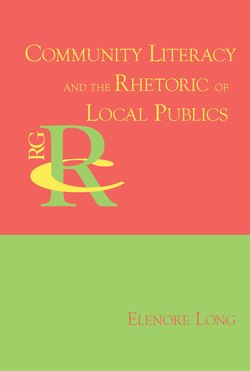Читать книгу Community Literacy and the Rhetoric of Local Publics - Elenore Long - Страница 16
На сайте Литреса книга снята с продажи.
Оглавление5 The Cultural Womb and the Garden: Local Publics That Depend on Institutions to Sponsor Them
Some local publics depend on institutional sponsors and use these institutional affiliations to create “inspired contexts” for literacy learning that operate in locations of stress and scarcity (Willinsky 153). As inspired contexts, these local publics employ democratic practices to nurture participants within their walls and to prepare them for literate social action outside them. But what makes an inspired context for literacy learning a decidedly public achievement—albeit, a local one? The answer lies within the rhetoric of transformation that such sites enact. To explore the rhetoric of transformation and its relation to public life, this chapter compares an African American congregation in south central Wisconsin to a women’s writing workshop in the Tenderloin District of San Francisco.
A Cultural Womb: The Local Public in Brandt’s Literacy in American Lives
In Literacy in American Lives, the local public is a cultural womb that nurtures the whole person, even as it prepares members for social activism outside its borders.1 This image describes Metro AME, eight of whose members participated in Brandt’s study of “how ordinary people learned to read and write” over the course of the 20th century (American 2). The image of the cultural womb describes the black church at large and also Metro AME as an individual congregation. The image evokes not the biological womb supporting the lone fetus but the political space safeguarding a colonized people. As such, the cultural womb evokes the political significance of what bell hooks calls “homeplace” (41)—whether the slave hut or the meetinghouse—where “colonized people can project an alternative future partly on the basis of a place beyond domination” (I. Young, Body 160).2
Distinctive Features: Nurtures and Prepares
As an image of local public life, the cultural womb first reclaims nurturing as a potentially political act of meaning making. The image then pairs nurturing with preparation for social action outside its walls.
Nurtures. Nurturing is a key feature of the African American church at large, and of Metro AME, in particular.3 Organic and holistic, the cultural womb suggests a place that nourishes the many dimensions and phases of human development. Unlike a school that prioritizes the intellectual development of its students or a Boys and Girls Club that prioritizes social or physical aspects, the image of the cultural womb attends to the full range of human needs. In the context of the African American church, the act of nurturing members from cradle to grave—in art, music and politics, for instance, as well as theology—has had political, as well as spiritual, implications. In various forms of “cultural support and uplift” (Brandt, American 118), nourishment has played a “compensatory role [. . .] in providing against poverty and government neglect” (114).
